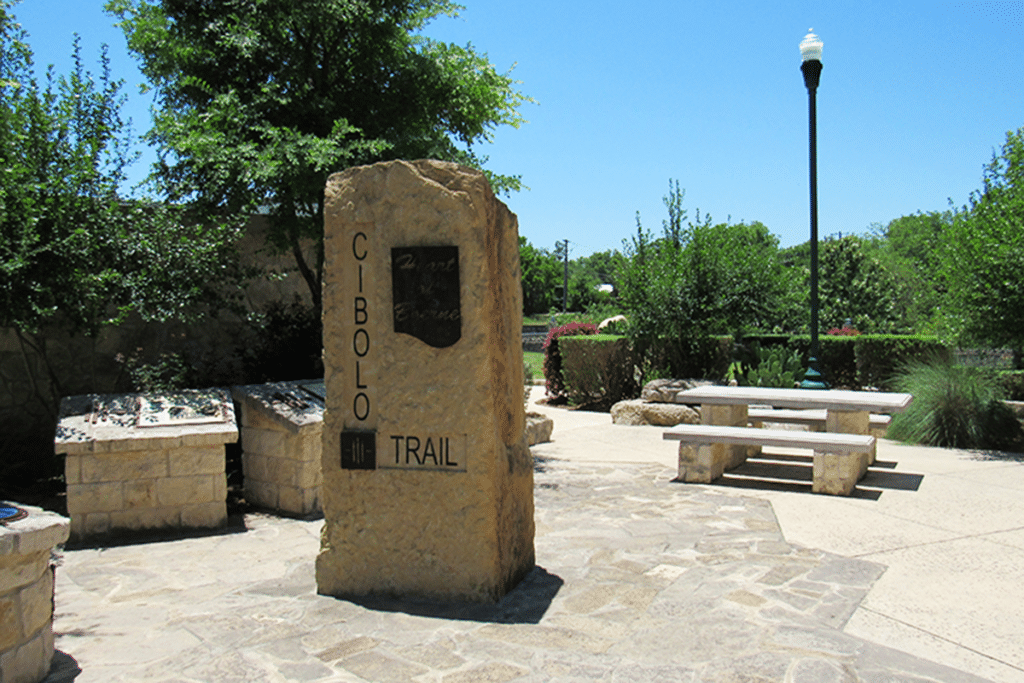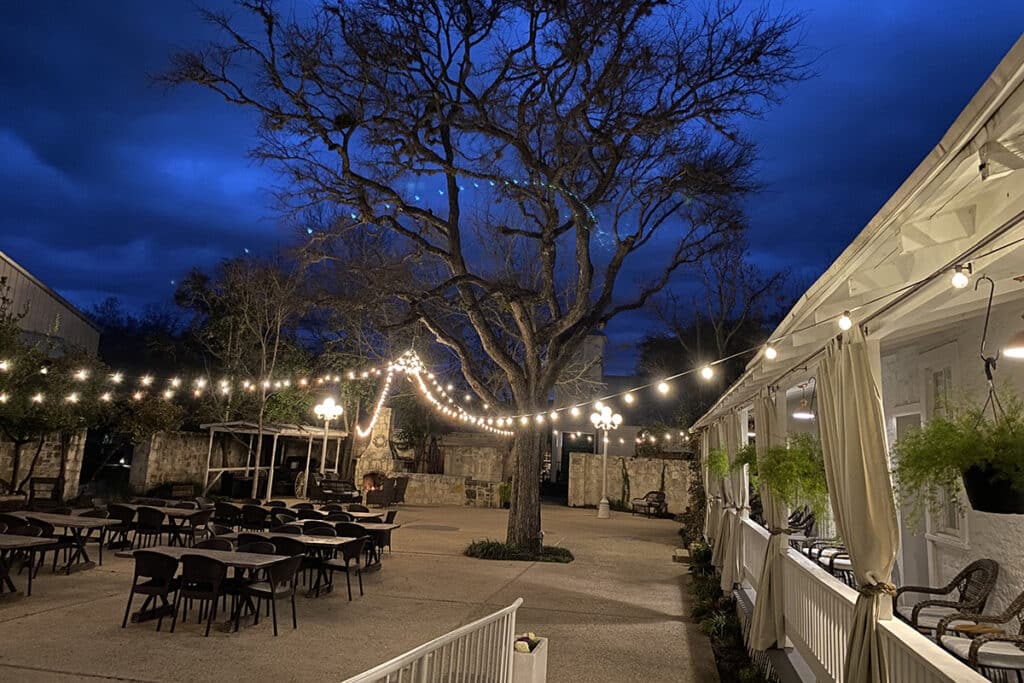On April 19, U.S. Bankruptcy Judge Leif Clark approved the San Antonio Symphony’s reorganization plan, permitting the venerable but troubled organization to emerge from Chapter 11 and a year of silence and uncertainty. “Let’s go make music,” the judge said.
Now the music is expected to resume this month, not exactly as before, but under new management and with some new ideas on how the orchestra can sustain itself as a financially viable organization.
To find out more, we talked to the man in charge, new CEO Bruce Johnson, Ph.D., who came on board Feb.1. Johnson hammered out the smaller 2004-05 budget of $5.8 million, which includes an operating budget of $5.5 million plus $300,000 for debt liquidation. Since about 50 percent of operating funds are allocated for musicians’ pay and another 25 percent for production costs, both players’ salaries and the number of concerts had to be reduced to fit the new budget.
Dr. Johnson came to San Antonio after a long career in research, business and investing, and both he and his wife, Anne, have been lifelong musicians and music supporters.(Some of Dr. Johnson’s answers have been slightly edited for reasons of space.)
San Antonio Woman: You came here to retire after a multifaceted career. Why did you take on this job, considering the symphony’s financial troubles?
Bruce Johnson: Frankly, I believed in this orchestra. I had heard it perform, and I was very impressed and then appalled at its demise. I needed a challenge, so I didn’t ask myself a whole lot about the difficulty of the job. I just said, “I think I have some skills that are relevant here, and I certainly have the motivation. Let’s do it!”
SAW: What are the key elements of the reorganization plan?
BJ: The single most important element was scaling back the size of the season. The underlying concept was to reduce the number of weeks in the musicians’ contract to bring the total budget down to such a level where the contributions part of the budget was comparable to past experiences. In other words, we were not counting on raising more funds than had historically been raised. After that, there were a number of ideas on marketing, use of multimedia, development, etc.
I should point out that even though we went from a 39-week to a 26-week season, the 26 weeks are still spread over 39 weeks, and we were able to deliver almost as many concerts as in the past.
SAW: Who are the major donors, and is the level of giving so far higher than in the past?
BJ: Five major stakeholders — Valero, Zachry, USAA, C.H. Guenther & Son and Frost Bank — are the companies that committed to funding the restart period and the 2004-05 season. The Kronkosky Foundation is also a major donor, and discussions are under way with SBC. The magnitude of the various awards we are getting from other companies, foundations and individuals is comparable to the past, but the development campaign is still under way.
Clearly, we should focus on increasing giving, but more important is the focus on broadening the base, on finding new sources. In the past, we have depended heavily on large companies headquartered in San Antonio. There is no reason to limit ourselves to these. There are a lot of companies that do major business in San Antonio that could sponsor events, for example. There are also foundations that are not rooted here but still support the kind of programs we have. Also, there hasn’t been an organized effort in the past to bring midsize business into our fold.
SAW: What makes the donors more confident now?
BJ: You have to divide donors into two categories. There are very sophisticated donors who will look at the financial models, analyze them and come to the conclusion about the viability of the plan we put together. Major companies and some foundations have done that. On the other hand, you have the foundations and individuals that are philanthropic, that never really lost their confidence. They want this orchestra, and they are supporting it with their usual level of giving.
SAW: What are some of the new marketing approaches?
BJ: A lot of attention will be given to segmenting the market and reaching different segments. You’ll see TV ads, billboards. We have a new Web site, a new look and a new logo. On the Web site, people will be able to renew subscriptions, buy single tickets, make donations. We will be collecting e-mail addresses so that we can contact our base constituency more frequently. If you have to do it by mail, it gets expensive. And, of course, we will do things that we have done in the past — print and radio ads. And we will co-market with other organizations.
SAW: The symphony’s strategic plan talks about changing the organization’s mindset from “providing a service to the community” to providing “a direct benefit to consumers and sponsors while competing for the entertainment dollar.” Could you comment on that?
BJ: It’s an idea that I came up with independently, too. We serve (a number of) different constituencies — the audience, donors, sponsors, city government, musicians, so forth. I think that this organization has to offer value to every one of these constituencies. Clearly, we must deliver value to our audience first, and that comes in the form of quality. Packaging is next, to give people flexibility to choose what they want and to provide variety in programming. And we must provide programs to reach different audience sectors.
SAW: Are the “Big Bang” and the “Around Town” series moves in that direction?(“Big Bang” refers to a splashy, attention-grabbing event to open each season. “Around Town” consists of concerts in nontraditional venues around the city. See sidebar.)
BJ: We are doing that (Big Bang) with the London Symphony on Sept. 5. We are presenting the London Symphony at the SBC Center on their 100th anniversary. It’s both a financial and marketing benefit for SAS.
The “Around Town” is funded by the city (from funds allocated last season), and we have three of those scheduled and more may be added. The funds are being withheld until the concerts are actually performed. We will also co-produce events with other local organizations, such as Arts San Antonio, the Lyric Opera and Ballet San Antonio.
SAW: How does your financial expertise translate into how you will manage the symphony’s affairs?
BJ: I am very, very strong on planning; I am conservative. So, I expect to model and simulate our operations for at least a year out and eventually for multiple years out. By modeling, I mean we’ll create computer models of our operations that allow us to play what-if games. We have the ability to turn off and on various variables and figure out what it does to us financially and scheduling-wise. So we can experiment with different ideas and find the best combination of things. That’s on the planning side. On the execution side, I am very focused on setting goals, on clear responsibilities and accountability. And another key element — I hire very good people.
SAW: How was the 2004-05 programming chosen and by whom?
BJ: We started with the programs that had already been put in place for the dark season. The classical series was designed by music director Larry Rachleff, while the pops series was designed by the staff. We weren’t able to schedule everything (as originally conceived) because we were starting very late, so we began juggling things until we met many criteria in terms of quality, diversity, range of different artists, audience interests, etc., a long set of criteria.
SAW: Are the musicians reasonably happy with the new arrangements?
BJ: Any time you take a cut of the size we did, it’s obviously very difficult. I assume and hope that most musicians have come to terms with that at this point. We are working very hard to establish positive relationships with the musicians. It’s the most enjoyable part of my job. It’s certainly my desire to grow that positive feeling, to get us functioning as one integrated family.
SAW: Are the players’ salaries expected to increase in the upcoming seasons?
BJ: Yes, there is an automatic increase in weekly salaries of $50 for the next two seasons.
SAW: What makes you confident that the resurrected symphony will be successful?
BJ: Very careful planning and putting in the systems and management processes to execute the plan is extremely critical. We can manage the expenses pretty well. On the revenue side, we are depending on new marketing and development processes, on broadening the base, as we talked about earlier. That’s where the risk taking is, where you invest in order to make money, like any other business. Making full use of the board’s resources as well as growing the board are also key factors in our future success.Another reason that I can be confident, besides the things that we can do, are the things that we must do. The symphony is so critical to the infrastructure in this community, this is so critical for future generations, that we must make it work.
THE 2004-05 SEASON
To launch its back-in-business season, SAS has chosen to reintroduce symphonic music in San Antonio by sponsoring the appearance of another orchestra: the 100-year-old London Symphony on its very first North American tour. The Brits will dazzle us with a laser light show, film clips and Hollywood music from Star Wars, Titanic, Harry Potter, Lord of the Rings, and other famous movies. Scheduled for Sept. 5 in the SBC Center, the “Big Bang” extravaganza is designed to attract new fans and benefit the San Antonio Symphony.
The regular season, which starts Sept. 17/18, will once again consist of a classical and a pops series, plus concerts for young audiences and a new “Around Town” trio of concerts co-sponsored by the City of San Antonio. In addition, the symphony is pairing up with Ballet San Antonio and ARTS San Antonio to present a two-week run of The Nutcracker at the Lila Cockrell Theater.
To accommodate audiences’ tastes, the ratio of pops vs. classical performances has been slightly increased, with 12 classical — down from 16 — and 8 pops programs scheduled in the Majestic Theater. Since programs may be repeated more than once, the total number of concerts is, respectively, 24 and 22.
The classical series offers a good mix of favorites, such as Dvorak’s Symphony No. 9, From the New World; Handel’s Messiah; Grieg’s Piano Concerto and Schubert’s Symphony No. 9, and contemporary works by Pierre Jalbert, Philip Sawyers, Lukas Foss, Roberto Sierra and Michael Daugherty. Music director Larry Rachleff will conduct four of the programs, with guest conductors, including former music director Christopher Wilkins, leading the rest.
Among the soloists, we will hear cellist Alisa Weilerstein, clarinetist Ilya Shterenberg, and violinists Stephanie Sant’Ambrogio, Karen Gomyo and Caitlin Tully, the latter a 16-year-old child prodigy. Also featured are outstanding pianists Jeffrey Siegel, Awadagin Pratt, Jon Kimura Parker, the Clinton-Narboni duo and Christopher O’Riley.
Highlights of the pops series include the Grammy-winning Riders in the Sky, Three Dog Night, The Supremes starring Mary Wilson and The Lettermen, plus the orchestral suite The Planets, which has been set to a film of space images from NASA.
Music lovers will also be able to enjoy three free “Around Town” performances scheduled in connection with Diez y Seis de Septiembre (Sept. 19), Founders’ Day (Oct. 23) and Martin Luther King’s birthday (Jan. 16, with a gospel choir). A splashy Sea World show may be added to the list.
Author: Jasmina Wellinghoff
Photographer: Janet Rogers




